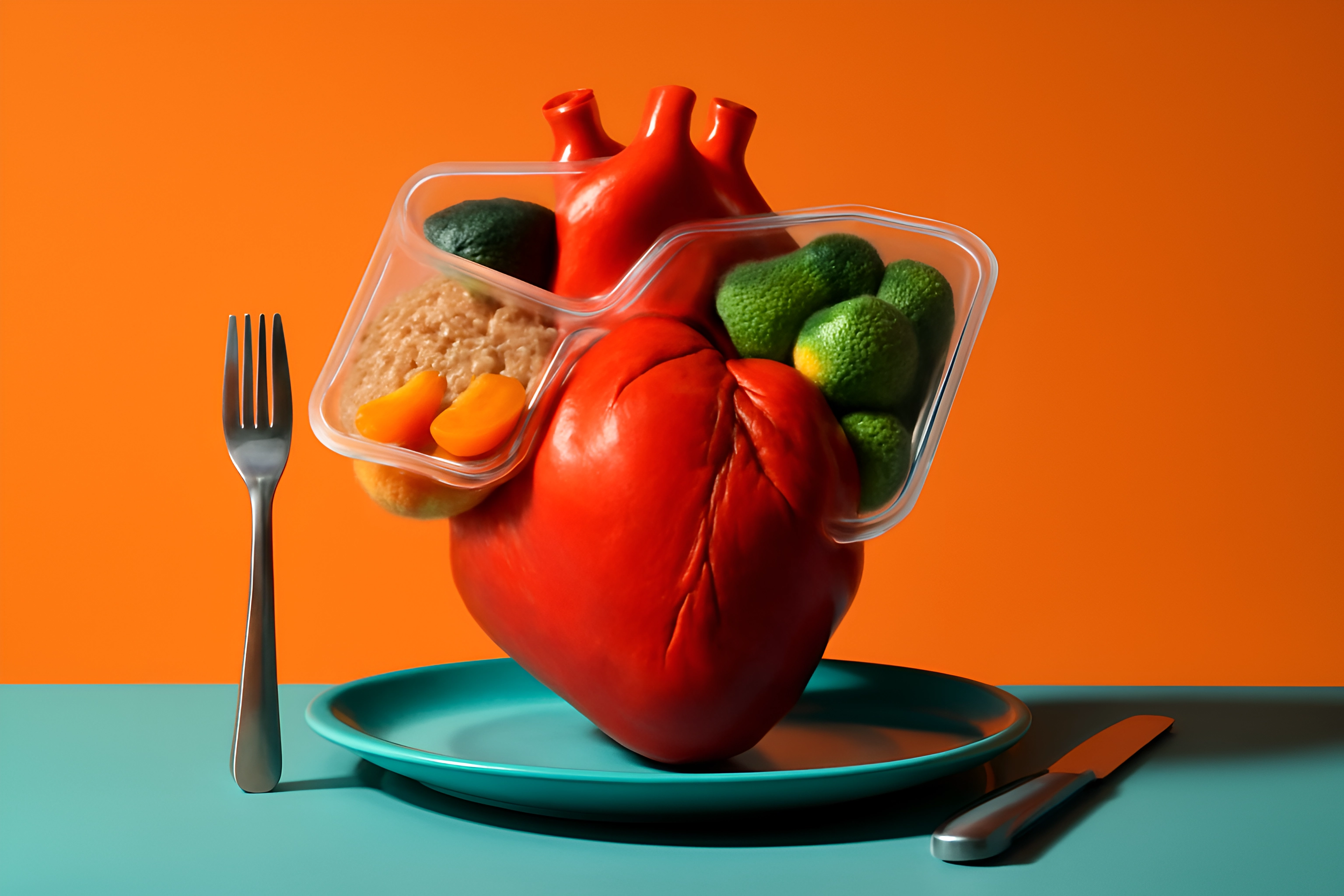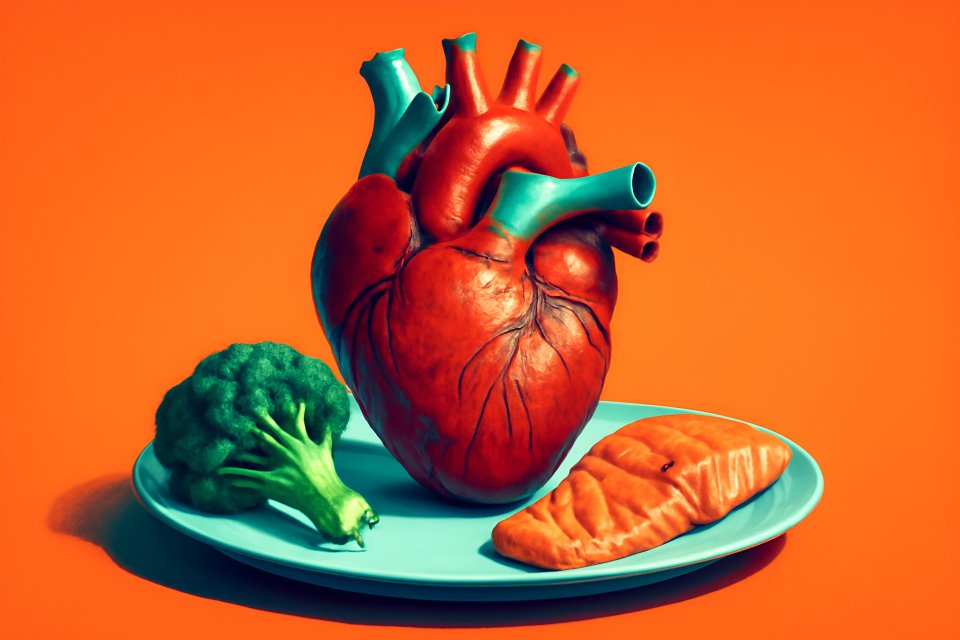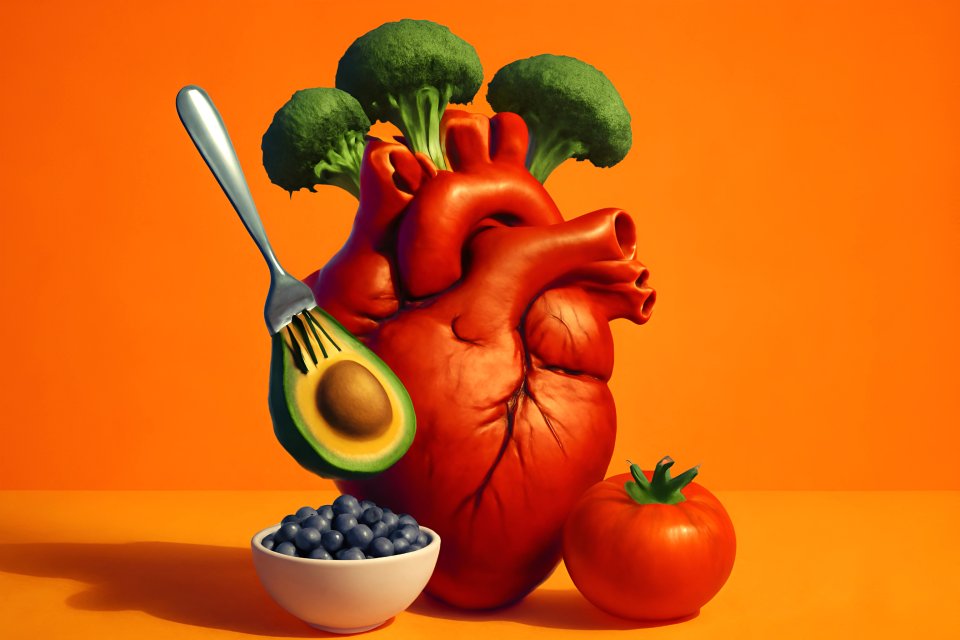
Introduction: Take Control of Your Heart Health, One Meal at a Time
Does the question 'What's for dinner?' feel more stressful than it should? You know you want to eat for a healthier heart, but life gets busy, and those takeout menus start to look dangerously tempting. It’s a familiar story, a daily tug-of-war between your best intentions and the reality of a packed schedule.
This is where you reclaim your power. We want you to reframe meal prep not as a weekend chore, but as the ultimate act of empowerment and self-preservation. It is your single greatest strategy for taking absolute control of your nutrition, especially when it comes to protecting your most vital organ after the age of 50.
This practical guide will break down meal prep strategies for heart health over 50 into simple, manageable steps that fit your life. We will walk you through everything from building a powerhouse pantry to assembling delicious, grab-and-go meals. You are about to discover that you don't need to be a gourmet chef to nourish your body, defend your heart, and secure your future vitality.
Why Meal Prep is a Game-Changer for Cardiovascular Wellness After 50
Let’s be direct: as we move past 50, our bodies change, and being proactive about heart health isn't just a good idea—it's essential for survival. Factors like blood pressure and cholesterol demand our attention more than ever. Meal prep is your frontline defense, a powerful system for building cardiovascular resilience day after day.
First and foremost, you seize control over the ingredients. Restaurant meals and pre-packaged foods are notorious for being loaded with hidden sodium and unhealthy fats, two of the biggest culprits in driving up blood pressure and damaging arteries. According to the American Heart Association, a key part of managing blood pressure is a heart-healthy diet low in these additives. When you prep your own meals, you become the gatekeeper, ensuring every bite serves your health.
Beyond what you eliminate, think about what you gain. Planning your meals helps you intentionally boost your intake of heart-protective nutrients. You can strategically incorporate more soluble fiber from oats, powerful antioxidants from berries, and anti-inflammatory omega-3s from fatty fish. This isn't just wishful thinking; it's a calculated way to arm your body with the essential heart-healthy foods for seniors that studies show make a real difference.
Finally, consider the profound impact on portion control and stress. Pre-portioning your meals is an effortless way to manage your weight, which directly reduces the physical strain on your heart. And don't underestimate the mental victory; eliminating daily "what-to-eat" decisions reduces decision fatigue and lowers stress, which has a measurable, positive effect on your cardiovascular system.
The Heart-Healthy Meal Prep Pantry: Your Foundation for Success
Your journey to a healthier heart begins not in the kitchen, but in the grocery aisle. Building a strategic pantry is the foundation for success, turning your kitchen into a reliable source of nourishment. Focus on stocking up on whole grains like rolled oats, quinoa, and brown rice; their high fiber content is a proven warrior in the fight against high cholesterol. Alongside them, keep a supply of lean, affordable proteins like canned tuna in water, lentils, and rinsed canned beans like chickpeas and black beans.
Next, arm yourself with the right fats and flavors. Extra virgin olive oil, avocados, and raw nuts like almonds and walnuts provide the monounsaturated fats that are critical for arterial health and reducing inflammation. Seeds like chia, flax, and pumpkin are tiny powerhouses of nutrients. To bring your meals to life without relying on salt, stock up on an arsenal of low-sodium flavor boosters: dried herbs, spices like turmeric and garlic powder, low-sodium broths, and the bright acidity of vinegars and lemon juice.
This approach is not just healthier; it's smarter for your wallet. A key part of sustainable meal planning for seniors is affordability. Buying staples like grains and dried beans in bulk significantly cuts costs, and prioritizing versatile plant-based proteins over expensive cuts of meat can make a huge difference in your grocery bill, proving that investing in your health doesn't have to break the bank.
The FitOverFifty 5-Step Meal Prep Method
Here is where the strategy comes to life. This simple, five-step method removes the guesswork and makes heart-healthy eating an achievable weekly routine.
Step 1: Plan with the "Heart-Smart Plate" in Mind
Before you shop, you need a blueprint. Visualize your plate according to the Healthy Eating Plate model from Harvard: fill half your plate with non-starchy vegetables like broccoli and spinach, a quarter with lean protein like chicken or fish, and the final quarter with fiber-rich whole grains or starchy vegetables like sweet potatoes. If you're new to this, start small. Plan just three or four days of lunches or dinners to build momentum without feeling overwhelmed.
Step 2: Create Your Shopping List
With your plan in hand, create a shopping list that is as strategic as your meals. Organize it by grocery store section—Produce, Protein, Pantry—to save time and, more importantly, prevent the impulse buys that can derail your health goals. This simple act turns your grocery run from a random hunt into a targeted mission for heart-healthy ingredients.
Step 3: Schedule a "Power Hour" for Batch Prepping
This is your moment of maximum impact. Set aside 60-90 minutes to create the building blocks for the week ahead. This is about efficiency, so tackle tasks concurrently. While a big batch of quinoa or brown rice simmers on the stove, toss a sheet pan of chopped broccoli, bell peppers, and sweet potatoes with olive oil and herbs and get it roasting in the oven. At the same time, you can bake a few chicken breasts, hard-boil a half-dozen eggs, and rinse a can of chickpeas.
Step 4: Assemble & Store Like a Pro
Once your components are cooked and cooled, it's time to store them for easy access. Use clear, airtight containers so you can see what you have at a glance. To maintain freshness and prevent sogginess, it's often best to store ingredients separately until you're ready to assemble your meal. Always let food cool completely before sealing and storing, and be sure to label and date your containers.
Step 5: Mix, Match, and Repurpose
The true genius of this method is its flexibility. You are prepping ingredients, not just rigid, identical meals. This prevents boredom and gives you creative freedom throughout the week. Those roasted vegetables can be a side dish for salmon on Tuesday, the star of a quinoa bowl on Wednesday, and folded into a hearty omelet on Thursday. This approach ensures your meals are always fresh, interesting, and perfectly aligned with your health goals.
Simple & Delicious: Heart-Healthy Recipe Ideas
Now, let's put those prepped ingredients to work. These aren't complicated recipes, but simple assembly instructions to create delicious, nourishing meals in minutes.
Breakfast Idea: Overnight Oats Jars
This is the ultimate grab-and-go breakfast that works for you while you sleep. In a jar, combine your pre-portioned rolled oats, a scoop of Greek yogurt or a splash of milk, a tablespoon of chia seeds, and a handful of fresh or frozen berries. The soluble fiber from the oats is a powerhouse that helps lower bad cholesterol. For more ideas, explore these balanced breakfasts for seniors to start your day right.
Lunch Idea: The Ultimate Quinoa Power Bowl
Say goodbye to sad desk lunches. Start with a base of your pre-cooked quinoa and top it with roasted chickpeas, a handful of fresh spinach, chopped cucumbers, and a simple dressing of lemon juice and tahini. This bowl is a perfect balance of plant-based protein, fiber, and healthy fats that will keep you energized all afternoon. To discover more powerhouse ingredients, check out our guide to heart-healthy superfoods and recipes for seniors.
Dinner Idea: Baked Salmon with Roasted Veggies
Dinner doesn't get much simpler or more effective than this. Take a salmon fillet, season it with lemon and dill, and bake it until flaky. Serve it alongside a generous portion of your pre-roasted asparagus and sweet potato chunks. Salmon is packed with omega-3 fatty acids, which are true superstars for reducing inflammation and supporting overall heart health. For more inspiration, find other nutrient-dense dinner ideas for heart health to add to your rotation.
Snack Idea: The Smart Snacker's Box
Beat the 3 p.m. slump with a snack that fuels, not fails. In a small container, combine one hard-boiled egg, a small handful of walnuts, and some baby carrots. The combination of high-quality protein and healthy fats from the egg and walnuts provides lasting energy and satiety, keeping you full and focused until your next meal.
Conclusion: Your Journey to a Healthier Heart Starts Now
Remember this: meal prep is more than just a kitchen hack. It is a powerful, practical, and profound tool for anyone committed to supporting their heart health over 50. It is the tangible expression of your decision to choose control over chaos, simplicity over stress, and consistency over convenience.
Every healthy meal you prepare is a direct investment in your vitality, your longevity, and your future. It is one of the most significant ways you can show up for yourself and honor the body that carries you through life. You are capable, you are in control, and you’ve got this.
What's your go-to meal prep tip or heart-healthy ingredient? Share your wisdom with the FitOverFifty community in the comments below! For more age-defying nutrition and meal planning tips and fitness routines designed for your best years, subscribe to our newsletter.












